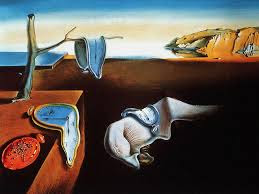“I chose not to choose life. I chose something else. And the reasons? There are no reasons. Who need reasons when you've got heroin?" – Mark Renton
Mark Renton is one of
the main characters of the movie Trainspotting along with his so-called friends
who, as the movie depicts it, are a bunch of losers, psychos, thieves, and
liars. Spud, Sick Boy, Tommy and Begbie are Renton’s friends in the movie that
complete the circle of junkies. The story narrates the breakdown of their friendship
as they proceed apparently towards self-destruction. This film was released in
1996 and is directed by Danny Boyle (I'm not particularly sure of other works of Boyle but I'm pretty sure he's a good one).
The film’s setting is in
Edinburgh, Scotland (which reminds me the scene about the “Worst Toilet in Scotland”).
That’s right, it is a British satirical drama movie that talks about heroin
junkies. It talks about drugs, sex, and violence. Yes, basically all the
elements of classic cinema are present in this one. And it can also be considered as “black film” since
most of the doings in this film are underground or not in accordance to the
norm (if the norm is defined and considered as principle of right action and
acceptable behavior). It may be one of the most realistic and honest portrayals of
illicit drug abuse in film.
I’m not sure exactly
what to say about this movie. (Together with my classmates, we watched this in our Cinema class but honestly, I had to watch it again at home for me to be able to come up with a decent write-up.) All I know is this movie keeps me interested as the
story progresses since it tackles an awfully serious topic, at least for me.
Seriously, how many movies out there dealt with heroin addiction? Undeniably,
this film messed up with my mind a bit. It’s as if everything about being a
dopehead is just normal. That’s how this film make it looks like. Also, I know
that I’m not supposed to laugh at the “shite” but I can’t help it. Oh shite, I
find the Scottish accent very amusing. I love their accent already!
.jpg) |
| the worst toilet in Scotland |
As for the camera angles used, there are lots of different shot types and camera angles used in this film which portray the feeling and mood of the scene. Low angle shots, close up shots, medium close-ups, and point-of-view shots were utilized from one scene to another.
The opening scene of the film starts off with low angle shot as Renton runs past the camera. The shot also gives emphasis on his feet and the environment he is running in. It is also noticeable that the road he is running down is somewhat busy because of the number of people in the background. But despite of that, there appears to be a clear space for him to run.
Then it cuts to plenty of medium close-ups, low angle shots and even hand-held running shots as the scene shows that Renton and his friend are running away from a group of men. The fact that they are running implies that they have done something wrong or have a reason to be running away.
The POV (point of view) shot is when Renton runs into a car which gives the audience a sense of danger. This made me feel nervous for a split second or two. This shot somehow created a feeling of empathy in me since I would be able to experience things with this character. The blood spreading in his hands though is what boggles me. It’s as if he’s guilty of something.
There is also that scene wherein Renton and his friends are playing football during which shots show the action scenes by using medium close-ups, low angle shots, full shots and close-up shots. These catch my attention again. And these are just the opening acts of the film. I will not be a spoiler. The rest of the film shots are for you to find out.
And if you’re asking what the connection of “trains” is or being a “trainspotter” or doing “trainspotting” in the movie, I can’t tell you. Because I, myself, am not sure if I was able to deduce it correctly. I was able to see a couple of actual trains in the movie which I don’t find any relevance in the film. Or maybe I was just so into the movie that I missed that part. So you better watch it yourself to find out. But if you are sensitive to stuff that I mentioned above, I suggest that you should probably just cross it out of your must-watch-movie list. Otherwise, I strongly suggest that you do.
Mind you, what this movie does have is a sense of style. There are some good monologues; some interesting camera angles and lighting; various symbolisms; comical and dark scenes; and some truly shocking moments apart from the nudity and violence. And on top of them all, this movie will make you think, although for me, there is no explicit moral to the story. I mean there lots of morals in this story, it's just up to you on how you perceived it.
(Credits: photos from Google.com)
Here's a trailer that I got from YouTube. Enjoy! :)
Now, if you feel like watching the movie and you got nowhere to go to acquire one, feel free to shoot me a message. I do have a copy of this movie. :)
.jpg)























